It was a formidable line-up baking there in the Mojave Desert sun: an assortment of Audis, BMWs, Lexus (Lexii?) and, perhaps most intimidating of all, a Porsche Panamera. But we hadn’t driven out to the California badlands for a shoot-out among traditional luxury brands. Across the tarmac, poised like the new sheriff in town: a line-up of new Kia Stinger GTs sat waiting to challenge the established order.
Kia? Really? Yep, really. The brand, long known for its no-frills subcompacts, has made some surprising strides in recent years with larger, more lavish offerings like the Optima sedan and Sorrento SUV. It’s even tried its hand in the luxury market with the full-size K900 sedan. Kia has already kicked sand in the faces of some of the industry’s most exclusive brands, handily topping the charts in a series of recent quality and customer satisfaction surveys.
And if any new model reveals what Kia’s plans for the future might be, it is certainly the new Stinger. First shown in concept form at the 2014 North American International Auto Show in Detroit, the five-door hatchback will be rolling into U.S. showrooms in the coming weeks with only the most modest of changes.
(Click Here for a review of the 2018 Kia Rio.)
Kia’s entry into the competitive GT segment was an eye-catcher in concept form and hasn’t lost any of its visual energy in production trim. Not surprising, of course, considering it was crafter under the guidance of Peter Schreyer, the former Audi chief stylist who has, since 2006, helped transform Kia into an emerging design leader. Credit for the actual penmanship goes to the brand’s chief designer Gregory Guillaume, who wanted a modern-day interpretation of the classic Grand Touring cars he saw heading to the south of France as a young boy.
See it coming at you in the rearview mirror and you’ll immediately spot the familiar “Tiger Nose” grille Schreyer pioneered before being elevated to vice chairman of parent Hyundai-Kia. The LED headlamps, meanwhile, give the Stinger a scowling look, enhanced by menacingly large air intakes that frame the front bumper.
The five-door’s silhouette is clearly and proudly rear-wheel-drive, with a long hood and short front overhang. The rear shoulders are muscular, with a longer overhang where the coupe-like takes its time before rolling into the rear hatch. When you factor in the 114.4-inch wheelbase – nearly two inches longer than that of the Panamera – the Stinger turns out to deliver not just plenty of rear legroom but unexpectedly good backseat headroom, as well.
(Company officials, during a background briefing, were quick to boast about the 2018 Kia Stinger’s dimensions, which are larger in almost every direction than those competitors they’d lined up at the Hyundai-Kia proving grounds in Mojave. The one number they were a little more reticent about was the GT’s mass: 3,650 pounds with the 2.0-liter engine, and about 3,900 for the GT model, with its turbo V-6 and all-wheel-drive. One key reason: a decision to stick with a steel body – using alloys produced by parent Hyundai – rather than the lighter aluminum upscale competitors today favor.)
From the rear, a brow-like lip spoiler extends over the low LED taillamps, quad chrome exhaust pipes emerging from the back diffuser.
Nineteen-inch, smoked alloy wheels – shod with sticky Michelin Pilot Sport 4 tires — enhance the planted appearance of the Stinger. But there is a slight bit of arriviste excesses, a few extra chrome details, such as Kia has used to highlight where air extractors emerge behind the front wheels. The good news is that these air curtains and other details, such as a smooth underbody, help enhance aerodynamics, both improving high speed performance and overall fuel economy.
Inside, Stinger is clearly a step up from the rest of the Kia line-up, with the exception of the premium luxury K900, which never really fit the brand, anyway. It clearly isn’t up to the refinement of an Audi or Porsche, but the car is also about half the price of its most direct European competitors, so that shouldn’t be a surprise.
(Kia’s new Stonic ready for prime time. For the story, Click Here.)
The real aluminum details are a nice touch, though the switches could use a little upgrading, and the 8-inch touchscreen on the GT model – seven inches on the base Stinger 2.0T – is a bit small by current standards. But it’s easy to read, nonetheless. And though it skips the remote control knobs and pads found on high-line European and Japanese models, it’s quite easy to use. It also offers both Android Auto and Apple CarPlay, as well as the latest Kia UVO infotainment technology. And you can order it with a 15-speaker, 720-watt Harman Kardon audio system.
Upgraded Napa leather seats are another option, though all cars get leather. And the seats are both supportive under hard driving and quite comfortable if you’re on the road for an extensive trip – precisely what you want out of a GT. The driver’s seat is a 16-way power system, by the way, with 12-way power adjustability for the front passenger.
And it’s important to understand that this is not a sports car, though it certainly does have the power to deliver some thrills under hard driving.
The base engine is a twin scroll 2.0-liter turbo making 255 horsepower and 260 pound-feet of torque. That’s pumped through an eight-speed automatic and, Kia claims, will get you to 60 in about 5.9 seconds.
The Stinger GT comes with a twin turbo 3.3-liter V-6 that bumps things up to 365 hp and 376 lb-ft. Interestingly, Kia says it found a way to trim a full four-tenths of a second off the GT’s 0 to 60 times since the car made its production debut in Detroit early this year. It now gets there in 4.7 seconds.
The GT shares the eight-speed, which delivers crisp shifts and is intuitive enough, at least in Sport Mode, that we seldom resorted to the upscale model’s steering wheel-mounted paddle shifters. Both versions are nominally offered in rear-wheel-drive configuration, though all-wheel-drive is optional.
We had the chance to drive both the RWD and AWD versions of the 2018 Kia Stinger GT out at the Mojave Proving Grounds. Perhaps it shouldn’t have been a surprise but we tended to favor the rear-drive model on the complex’s handling course, in part because it made it easier to drift, and point the nose where we wanted charging through the corners. That said, for those who’re likely to experience snow and other challenging road conditions, the all-wheel package is a good choice.
We had the chance to drive the Stinger on a variety of different courses, as well as spending a good part of a day on public roads. We were limited to a lengthy autocross configuration Kia set up while comparing the Stinger to those European and Asian competitors. No surprise, the Panamera was the real star on that course, almost intuitively digging in when the cones signaled a sharp corner, but picking up breathtaking speed when things straightened out.
That said, the Stinger posed a serious challenge when put up against the Audis, BMW and Lexus GS, actually delivering the fastest time through the final gate on the autocross run.
(To check out Kia’s turbocharged version of the new Soul, Click Here.)
The five-door GT did experience a bit of body roll in hard corners, and it didn’t have quite as crisp a suspension as the Europeans, but while it effectively took most of the bumps out of the road, it was far more than just a boulevard cruiser. When challenged on some mountain roads on the way up to the Hyundai-Kia Proving Grounds it showed itself off with aplomb, our confidence growing with each corner, especially after switching the driver’s mode to Sport – which adjusted a number of vehicle settings, including steering, throttle, shifts and suspension.
For brakes, the Stinger GT features four-piston Brembos with fixed calipers, not quite up to what you’ll find on the Porsche, but a solid package enhanced by a brake fade compensation system that allowed us to run lap after lap without the need of any additional effort to bring the five-door to a stop.
Meanwhile Kia notes it has integrated 18 different Advanced Driver Assistance Systems, or ADAS, into the Stinger, a number of them as standard gear on the GT. That includes blind spot detection, forward collision warning with automatic emergency braking and smart cruise capable of bringing the Stinger to a complete stop in traffic and then starting up again.
Those are the type of features that, not all that long ago, were limited to only the most exclusive models on the road, but the reality is that few Audi, BMW, Mercedes, Porsche – or even Lexus – buyers are likely to second-guess themselves and walk into a Kia showroom. If they did, and if they had a chance to take the 2018 Stinger out for a drive, however, they’d likely be in for a pleasant surprise.
“This represents the future of our brand,” said Orth Hedrick, the Korean carmaker’s vice president of product planning. And while he and other Kia officials won’t specifically discuss the fate of the K900 it seems likely that slow-selling model will be going away.
But will the Stinger attract an audience?
For now, Kia is more likely to attract buyers who’d love to move up to one of those high-line brands but can’t justify the steep price tag. And with a base price of $31,900 for the 2.0T, and a starting price of under $39,000 for the GT – plus $895 for delivery – the 2018 Stinger is a real bargain. Even fully loaded with everything from optional Napa leather to all-wheel-drive you’d be hard pressed to break $50,000 – around what the BMW 440i Grand Coupe starts at.
Don’t expect the Stinger to rival models like the Optima or Sorrento in terms of sales, but that’s not what a halo car needs to do. All those recent quality and customer satisfaction studies come as great news to the brand, but the Stinger will help Kia sum things up in one affordable, stylish and fun-to-drive package.

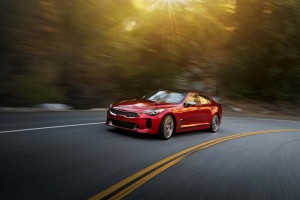
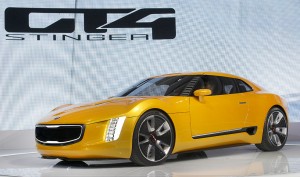
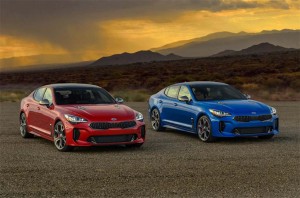
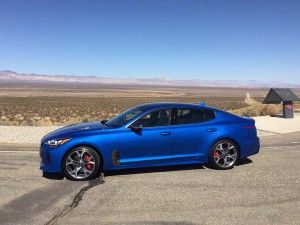
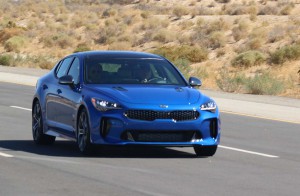
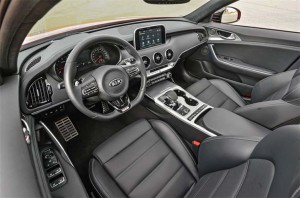
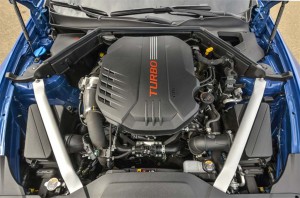
WHEN WILL THE KIA STINGER GT4 BE AVAAIABLE TO PRE BUY OR PURCHASE I WANT ONE NOW
It should be available in the coming weeks. Check your local dealer.
Paul E.